Norms & Values
In room 204 we worked everyday to create norms and values where students were embraced and respected. We created a safe learning environment and welcomed each student into our community. By following the school’s S.T.A.R. expectations for behavior, students received consistent messages and guides throughout the building both in and out of our room. Jen and I made an overt effort to go over each expectation thoroughly at the beginning of the year and this laid the foundation for us to refer back to when we needed to remind students as the year progressed. Our overarching rule was to treat others the way we want to be treated.
We built around this golden rule by following these norms:
- Students will begin the morning with the daily routine of writing in their conversation journals and participating morning meeting, to help build our classroom community and prepare for the day.
- Students should feel comfortable utilizing their tools around the room such as anchor charts, the word wall, and each other as resources they can use to do their best work.
- Students will be in control of their body, their things, and their learning to help create a safe learning environment.
- Students will take responsibility for their belongings, their learning, and their actions.
- Students will be actively engaged in their learning to become better readers, writers, mathematicians, scientists, historians, and people.
- Students will be kind to others by showing respect to the person speaking, teacher, or peer.
- Students will be respectful of the classroom materials and use them correctly.
- Students will be held to high expectations and encouraged to be their best selves.
Equity & Access
In every classroom, each student enters with different backgrounds, abilities, and learning styles. Room 204 was no different. This was a place where sixteen wonderfully different and unique individual learners came to be supported with individualized instruction. I firmly believe that each student has valuable thoughts, questions, and experiences to contribute to the classroom experience and promote learning. Over the pas year, I practiced implementing teaching strategies to personalize my practice and address the needs of all of my students in order to be successful and supported.
The strategies I explicitly worked on to increase access and equity in my room were:
- To validate each student and their contributions to the class.
- To make sure students feel appreciated and supported to take risks, try new things, and fail.
- To differentiate teaching in learning activities as well as assessments to support individual students’ needs.
- To scaffold activities and directions by modeling, while being clear and concise with my expectations.
- To use and implement specific strategies to best support all students, especially those who are English Language Learners and students on IEPs such as turn and talks, anchor charts, visuals, vocabulary support, etc.
- To provide opportunities for students to think, work through, collaborate, and share with peers in small groups or partners in low-stake settings.
- To interact with students one-on-one to check for understanding and to show each student they are valued and important to me and to the class.
Illustration
One way we built our classroom community that allowed us to differentiate and provide equity to all our students as well as create a routine in our mornings was through conversation journals. These journals meant a lot to me and my students throughout the year as it was a private and personal way to communicate and learn about one another. When the Covid-19 virus caused our school building to close, those notebooks were locked inside. Instead of abandoning this avenue for relationships with our students, Jen and I decided to incorporate conversation journals into our Google Classroom. Here are some examples of student entries that show this norm we created and maintained even after going virtual.
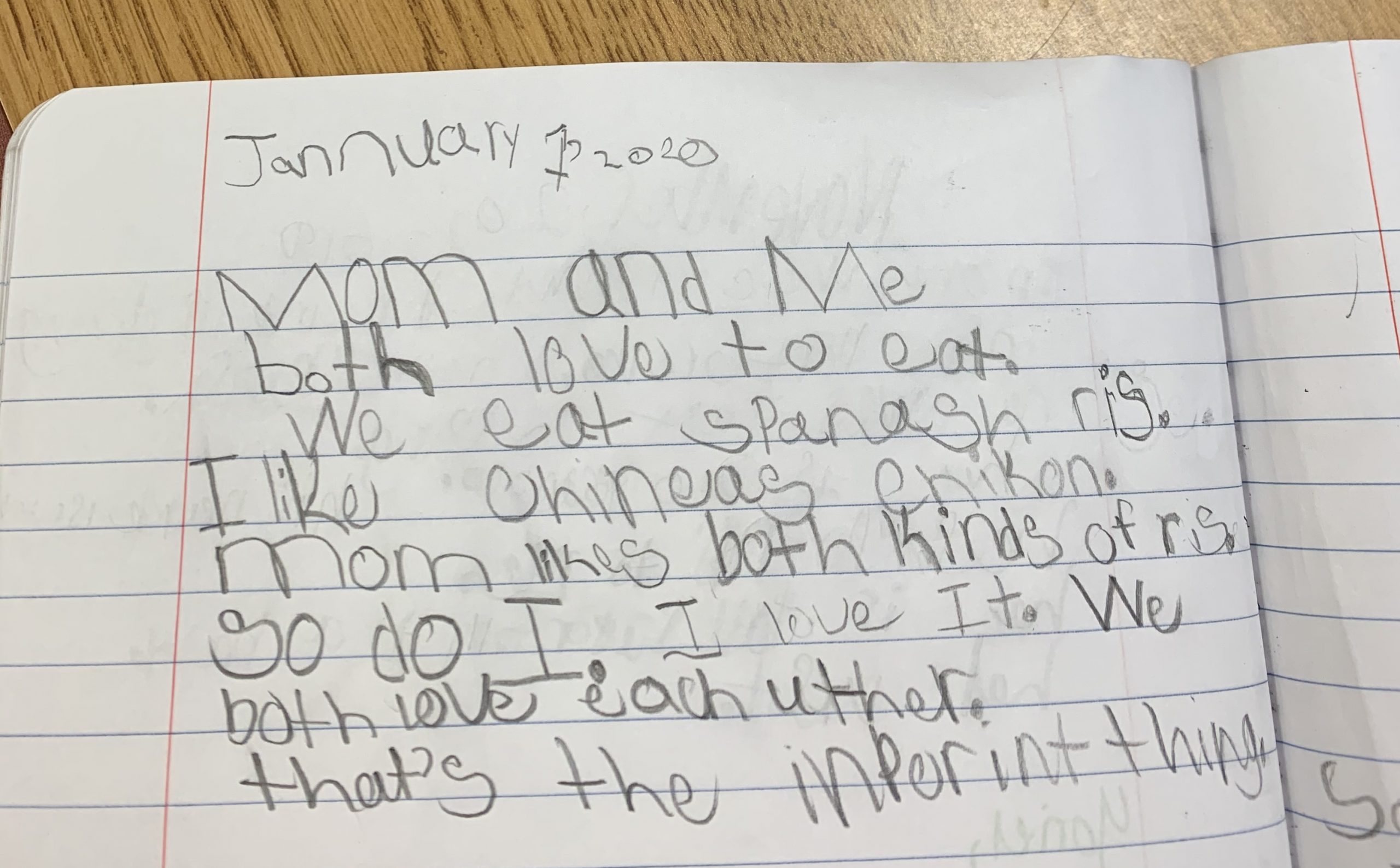
One of Yoriel’s journal entries. He wrote, “Mom and me both love to eat. We eat Spanish rice. I like Chinese chicken. Mom likes both kind of rice. So do I. I love it. We both love each other. That’s the important thing.”
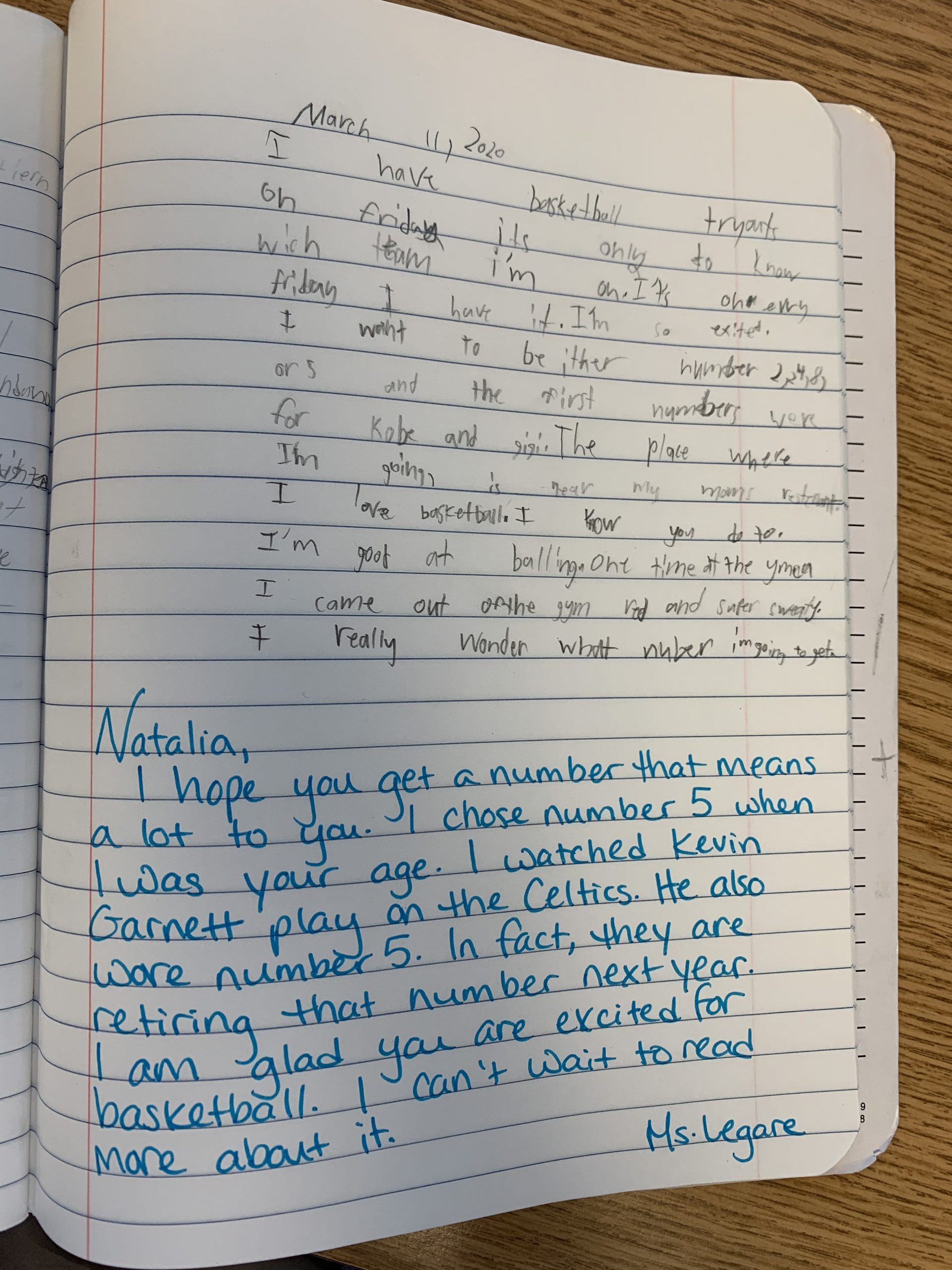
One of Natalia’s journal entries. She wrote “I have basketball tryouts on Friday. It’s only to know which team I’m on. It’s on every Friday I have it. I’m so excited. I want to be either number 2, 24, 8, or 5. The first numbers were for Kobe and Gigi. The place where I’m going is near my mom’s restaurant. I love basketball. I know you do too. I’m good at balling. One time at the YMCA I came out of the gym red and super sweaty. I really wonder what number I’m going to get.”
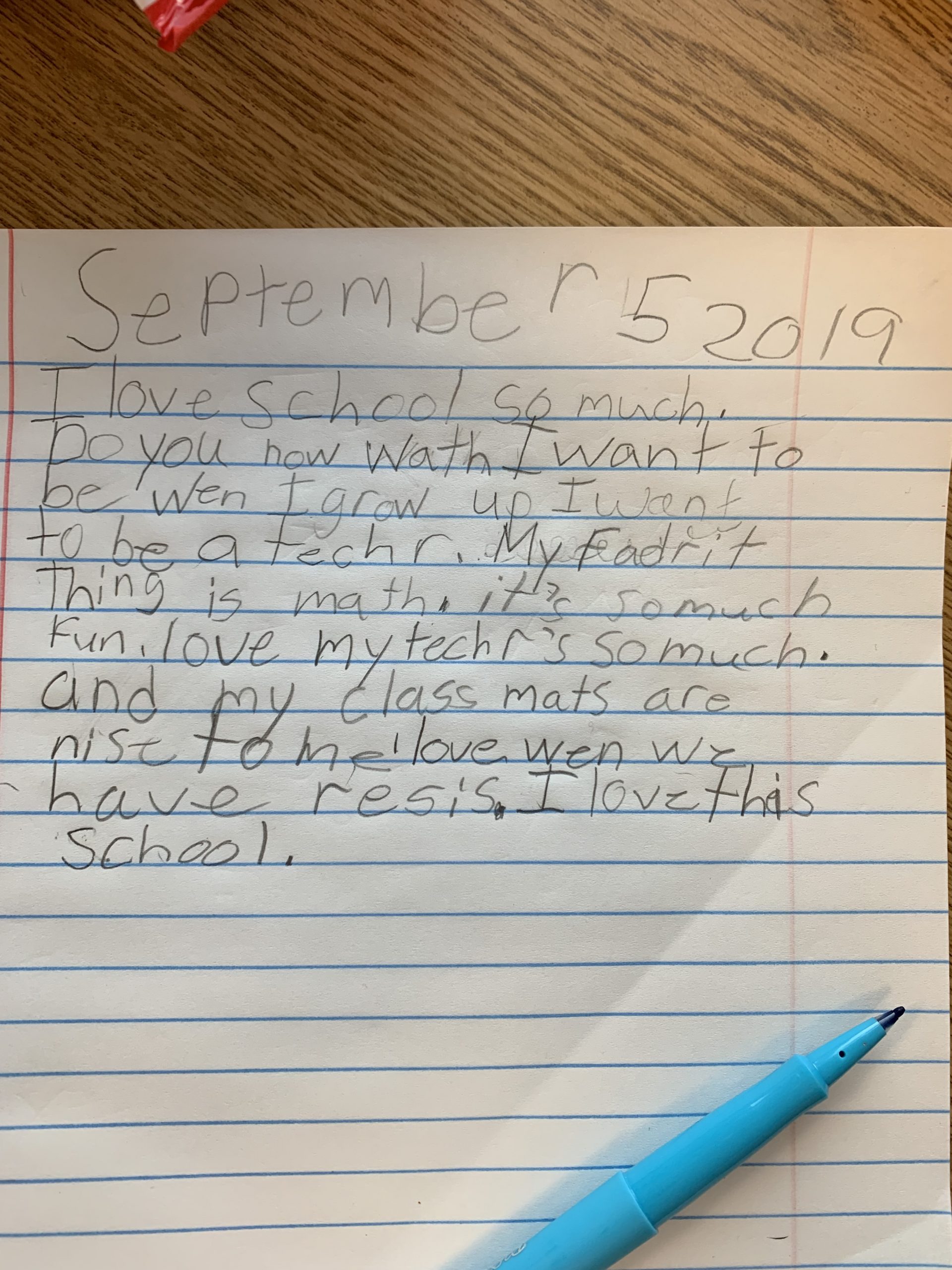
One of Jasharys’ journal entries. She wrote, “I love school so much. Do you know what I want to be when I grow up? I want to be a teacher. My favorite thing is math. It’s so much fun. I love my teachers so much. And my classmates are nice to me. I love when we have recess. I love this school.”
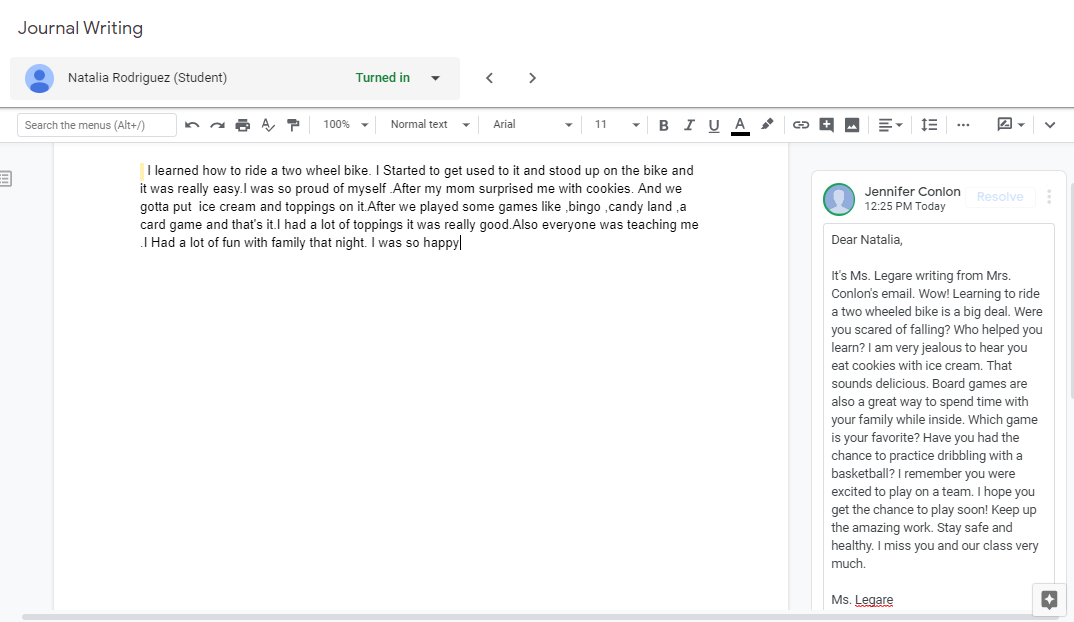
Natalia’s journal entry on Google Classroom. She wrote, “I learned how to ride a two wheel bike. I started to get used to it and stood up on the bike and it was really easy. I was so proud of myself. After my mom surprised me with cookies. And we gotta put ice cream and toppings on it. After we played some games like, bingo, candy land, a card game and that’s it. I had a lot of toppings it was really good. Also everyone was teaching me. I had lot of fun with family that night. I was so happy.”
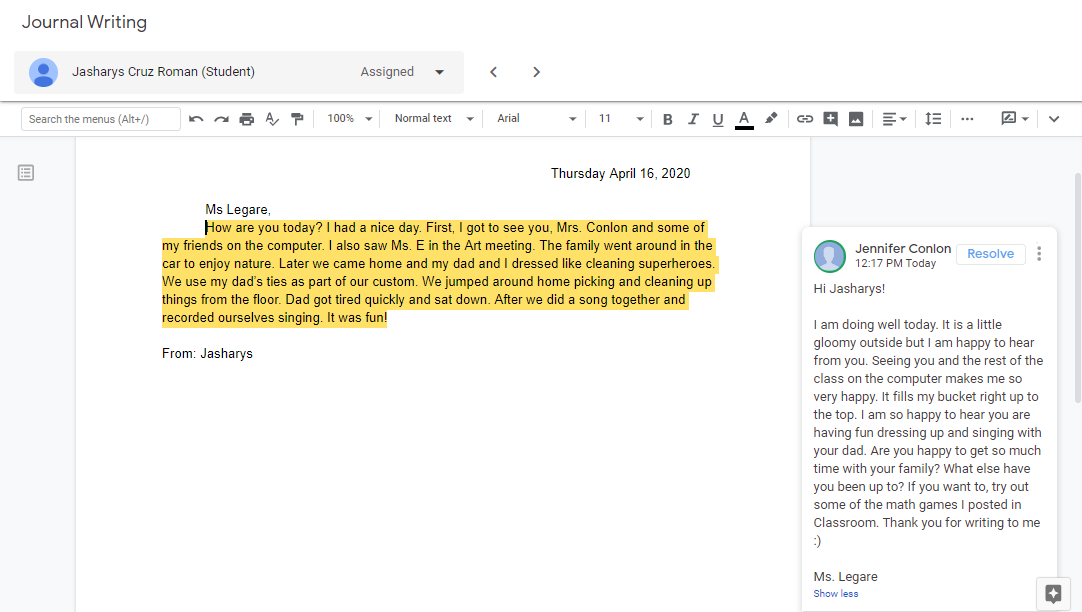
One of Jasharys’ journal entries on Google Classroom. She wrote, “Ms Legare, How are you today? I had a nice day. First, I got to see you, Mrs. Conlon and some of my friends on the computer. I also saw Ms. E in the Art meeting. The family went around in the car to enjoy nature. Later we came home and my dad and I dressed like cleaning superheroes. We use my dad’s ties as part of our custom. We jumped around home picking and cleaning up things from the floor. Dad got tired quickly and sat down. After we did a song together and recorded ourselves singing. It was fun!”